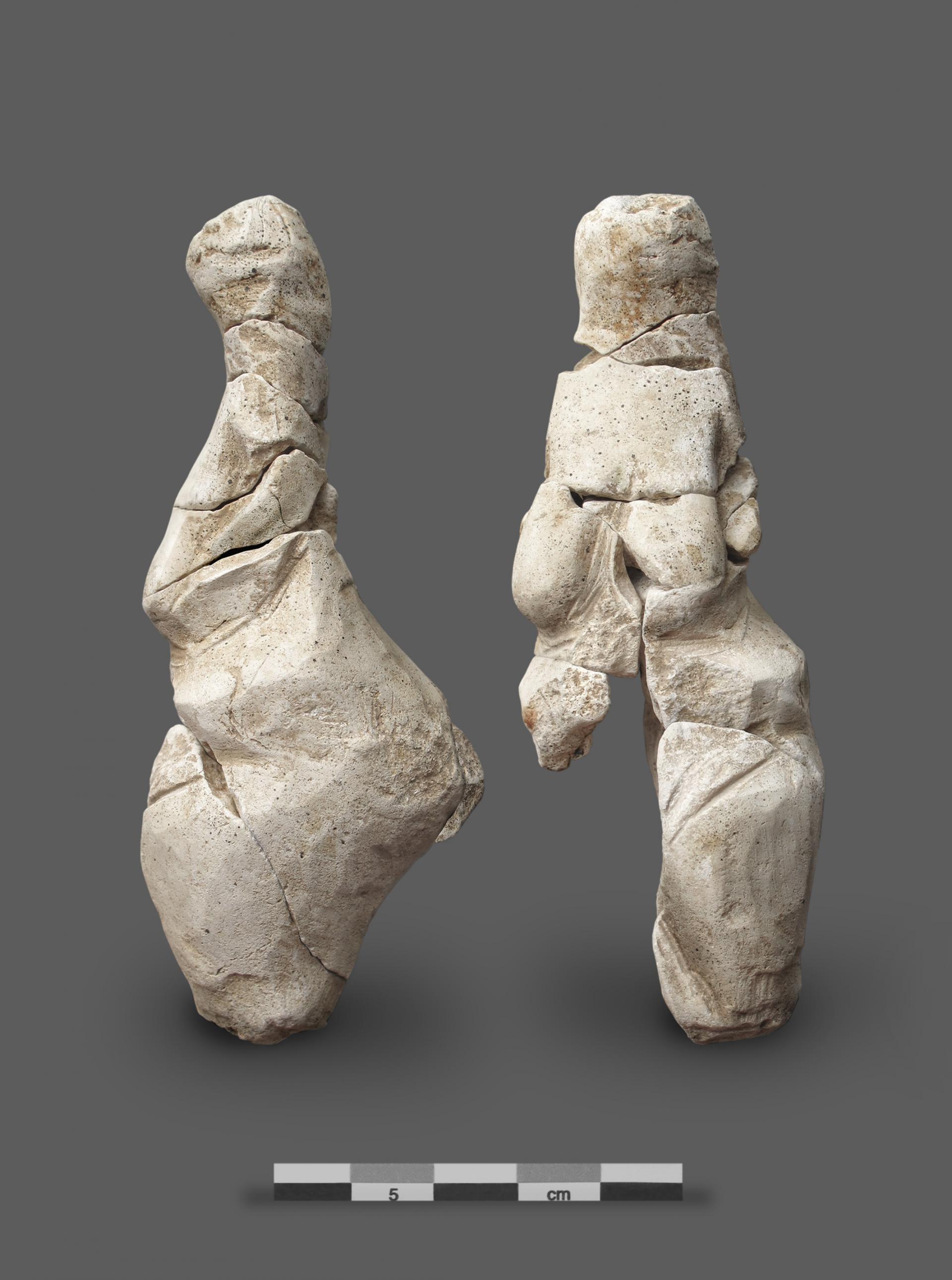Venus of Renancourt – The 4 cm tall figurine, carved from limestone, reflects the characteristics of the Gravettian culture of the Upper Paleolithic Period.
What is it?
This statuette, dating from around 21,000 BC, has the familiar form of a Palaeolithic ‘Venus’ figurine. Carved out of chalk and standing to a height of 4cm, the female figure has the prominent, fleshy thighs, buttocks, and breasts typical of these works from a late phase of the Gravettian culture (28,000-22,000 years ago). The face is undistinguishable and the arms barely there, but more clearly defined features include the figure’s navel and her hair, or headwear, marked out by a grid-like arrangement of thin incised lines. A similar series of lines on the head is seen in another small figure from around 21,000 BC: the Venus of Brassempouy, also known as the ‘Lady with the Hood’, from Landes, France.

Where was it found, and when?
The Venus figurine was uncovered in 2019 during excavations in the Renancourt district of Amiens, France. This part of Amiens provides important, and rare, evidence for the presence of Homo sapiens in northern France at the start of the Upper Palaeolithic. Excavations directed by archaeologist Clément Paris from Inrap (Institut national de recherches archéologiques préventives) in Renancourt since 2014 have unearthed well-preserved artefacts, sealed within silts from the end of the last glacial period. The artefacts have been radiocarbon dated to around 23,000 years ago and include personal ornaments like perforated chalk disks and flint projectile points for hunting and large blades for use as knives and scrapers. A large number of animal bones were also found, among them many from horses, suggesting that horse meat was often on the menu at this seasonal hunting camp.
Why does it matter?
Gravettian Venus figurines, such as the famous Venus of Willendorf from Austria, have been found across a large area spanning from the Pyrenees to Siberia. Their function and meaning remains uncertain, but some theories link their corpulence and the emphasis placed on the breasts and pelvic area to fertility and sex.
Until recently, there were only 15 known examples from France, mainly found in Aquitaine and the Pyrenees in the south-west of the country, as is the case of the Venuses of Lespugue and of Brassempouy. The last one uncovered in a reliable stratigraphic context was from Tursac, Dordogne, in 1959. Now, some 60 years later, the excavations at Renancourt have doubled their number. The first Venus figurine to be found in northern France, excavated in 19 fragments in 2014 and measuring 15cm high, turned out to be the first of 15 of these statuettes revealed at the site, culminating in the latest splendid discovery, featured here.

Not only have excavations at Renancourt uncovered the highest concentration of these figures in France, but they have also found several thousand chalk fragments, some seemingly waste from the production process, which has led the archaeologists to suspect that the site was a workshop where the statuettes were sculpted.
This is article appears in issue 99 of Current World Archaeology. Click here for more information about subscribing to the magazine.
Image: Stéphane Lancelot, Inrap
Related Post
A shocking documentary proves that mermaids do exist
SHOCKING Revelation: Thuya, Mother of Queen Tiye, Was the Grandmother of Akhenaten and Tutankhamun—What Ancient Egyptian Secrets Did She Leave Behind?
Breaking News: Astonishing Discoveries at Karahan Tepe Confirm an Extraterrestrial Civilization is Hiding on Earth, and NO ONE Knows!
Breaking News: Researchers FINALLY Discover U.S. Navy Flight 19 After 75 Years Lost in the Bermuda Triangle!
NASA’s Secret Investigation: Uncovering the Astonishing Mystery of the UFO Crash on the Mountain!
Explosive UFO Docs LEAKED: Startling Proof That Aliens Ruled Ancient Egypt!

